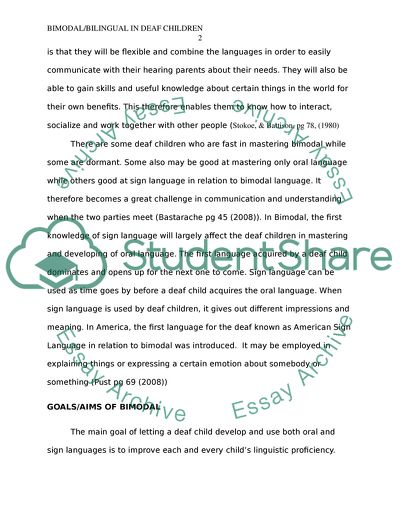Cite this document
(Theory of Learning Language in Deaf Children Literature review Example | Topics and Well Written Essays - 2500 words, n.d.)
Theory of Learning Language in Deaf Children Literature review Example | Topics and Well Written Essays - 2500 words. https://studentshare.org/education/1817987-bimodalbilingual-in-deaf-children
Theory of Learning Language in Deaf Children Literature review Example | Topics and Well Written Essays - 2500 words. https://studentshare.org/education/1817987-bimodalbilingual-in-deaf-children
(Theory of Learning Language in Deaf Children Literature Review Example | Topics and Well Written Essays - 2500 Words)
Theory of Learning Language in Deaf Children Literature Review Example | Topics and Well Written Essays - 2500 Words. https://studentshare.org/education/1817987-bimodalbilingual-in-deaf-children.
Theory of Learning Language in Deaf Children Literature Review Example | Topics and Well Written Essays - 2500 Words. https://studentshare.org/education/1817987-bimodalbilingual-in-deaf-children.
“Theory of Learning Language in Deaf Children Literature Review Example | Topics and Well Written Essays - 2500 Words”. https://studentshare.org/education/1817987-bimodalbilingual-in-deaf-children.


